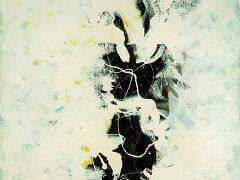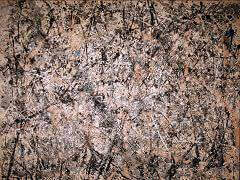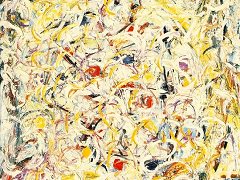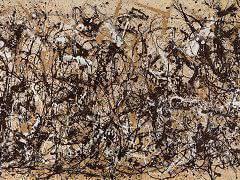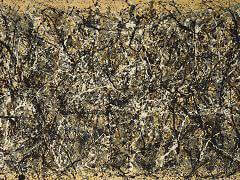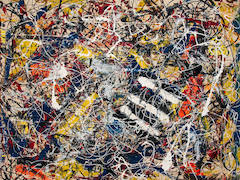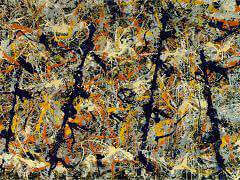Pasiphae, 1943 by Jackson Pollock
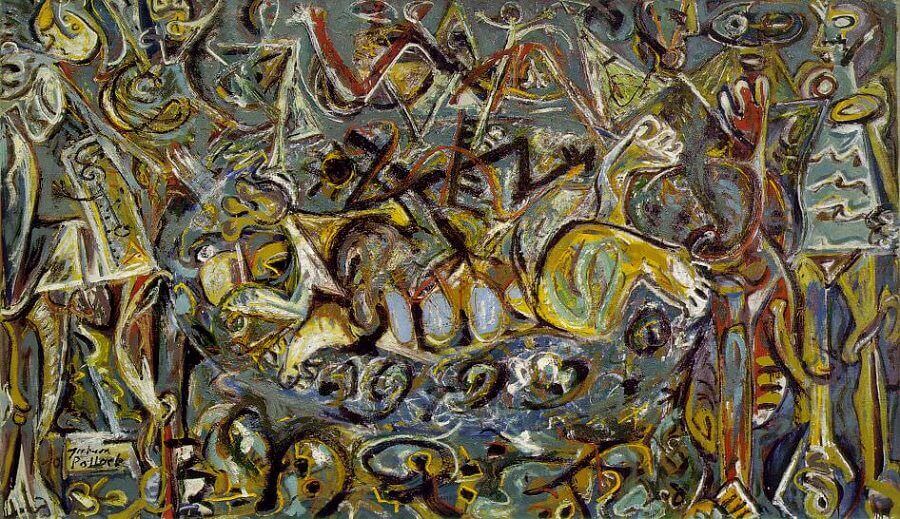
Finished just after Pollock's first exhibition in 1943 at Peggy Guggenheim's New York gallery, Art of This Century, Pasiphae is the largest of the painter's mythologically themed pictures of the mid-1940s. Originally named
Moby Dick, the picture was retitled before it was exhibited in 1944 when James Johnson Sweeney, a curator at the Museum of Modern Art, related the story of the Cretan princess Pasiphae who gave
birth to the half-man, half-bull Minotaur.
The Minotaur had been a favorite motif of Picasso and of the Surrealists (Minotaure
had been the name of their literary magazine from 1933 to 1939, for which Picasso had designed the first cover)
Here Pollock incorporates two sentinel-like standing figures at the left and right and a prostrate figure at center. Pollock weaves these figures into a complex field of arcane symbols and free-form abstraction, his own novel interpretation of the Surrealist practice of automatism, wherein the artist's unconscious is used to organize the composition.
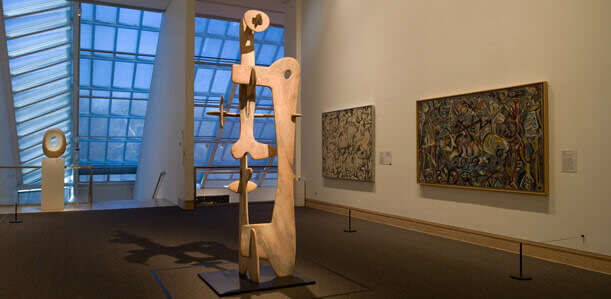
Pollock began Pasiphae by lightly painting in the outlines of the figures, and then applied colour in thin washes, gradually building up to thicker, opaque layers of paint. Dramatic linear accents were then introduced - at first around the contours of the coloured patches, and then cutting across these shapes to establish independent rhythms. To control this momentum and to re-establish order, Pollock next overpainted parts of the painting - particularly conspicuous is the grey overpainting at the top of the canvas. He applied each layer of paint directly and with increasing vigor, using not only brush, but palette knife and paint squeezed straight from the tube, to animate and extend the power of his drama.



